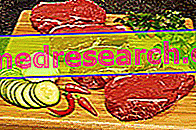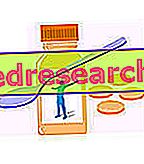By Dr. Giovanni Chetta
Dried fruit
Walnuts, almonds, peanuts etc., contain a lot of fats but mainly polyunsaturated fats (in particular nuts are a good source of omega-3). Studies show that they improve the HDL / LDL ratio, decrease the risk of heart disease and diabetes. Moreover, those who eat dried fruit tend to be less obese due to the satisfaction of the resulting appetite.
legumes
Beans, peas, chickpeas, lentils, beans, soy and peanuts are an important source of energy and protein. Dried legumes contain a percentage of protein equal to that of meat (20%) but of lesser biological value; they contain very amino acid lysine but few sulfur amino acids (metioniona and especially cysteine which are abundant in cereals). An exception is soy, which has a protein content of 38% without limiting amino acids. But combining them with foods rich in sulfur amino acids, such as cereals, you get a great meal at a cost 6-7 times less than the equivalent with meat (eg 50g of legumes and 200g of cereals + vegetables + seasonings = 1000 kcal and covers 2/3 of the daily protein requirement).
Before cooking, it is advisable to soak for 12-24 h (water should be changed 2-3 times) as it reduces the quantity of indigestible substances (saponins), of chelating agents (phytic acid that binds Fe iron) and antivitaminici.
It should also be added that legumes are "improving" plants due to the presence, in the roots, of bacteria that fix atmospheric nitrogen (all other plants absorb it from the soil). since not all nitrogen is used by legumes, the next crop benefits from this "donation". This cultivation technique ensures the soil is not impoverished. Today the introduction of chemical fertilizers has made the rotation disappear to give place to the monoculture, called "robbery" agriculture, more profitable (consequently the development of agricultural machinery has involved mostly corn and wheat).
Meats
A high consumption of red meat is associated with a risk of cardiovascular diseases, due to the high content of saturated fats and cholesterol, diabetes 2 and colon cancer; the latter probably because of the carcinogenic substances that are formed during cooking or because of preservatives.

Poultry (white meat) and fish contain less saturated fat and more unsaturated fats. Fish is also a rich source of omega-3 fatty acids. Replacing poultry and fish with red meat reduces the risk of cardiovascular disease and colon cancer.
With regard to white meat, however, the risk that estrogens (used to increase the weight of young animals) capable of causing hormonal imbalances in children should also be mentioned. The control of the origin of food is therefore always important.
eggs
The eggs contain a lot of cholesterol but it doesn't seem to bring problems. The recommended maximum consumption is 1 per day (except for diabetics).
Freshness test: "floating" test in a basin with water, the fresh egg is deposited on the bottom in a horizontal position and then, over time, it becomes vertical; if it is old it floats.
The digestibility of the eggs varies according to the way they are cooked: the best way is by boiling, poached or poached egg (ie with low cooking time).
Milk, cheese and dairy products (dairy products)
The high consumption was once justified as it was supposed to increase the intake of calcium (Ca). In reality, high fracture rates have been observed in countries with higher consumption of dairy products. In Italy, in the 1960s, calcium intake was ½ compared to that in northern Europe and there was less presence of osteoporosis than in those countries. There are no studies showing that their consumption reduces osteoporosis . Instead it is the excess of animal protein and the same salt contained in the cheese to favor the excretion of calcium. Furthermore, the studies seem to correlate dairy products to the risk of prostate and ovarian cancer. Therefore to fight osteoporosis it is better to take more proteins of plant origin and make movement. See also: diet and osteoporosis
Aged cheeses can be harmful to those who use antidepressants as they block the digestive action of tyramine (a powerful vasoconstrictor found in highly fermented cheeses).
Melted cheeses are normally produced from bad cheeses and from returns. They are not recommended due to the presence of polyphosphates (melting salts), especially for children, as they unbalance the calcium / phosphorus ratio (Ca / P). In addition they are made up of 50-60% in water: the cost of 1g of melted cheese protein is equal to the cost of 1 grain protein (the same is true for mozzarella which is 60% water).
Milk : Breast milk is the only food able to allow the growth of the newborn. The drinking milk is the cow's milk which, compared to the maternal one, has more thiamine and B12 vitamins, more than three times more protein and less lactose. In this regard it should be noted that: the vitamins and lipids of breast milk depend on the mother's diet and that 1/3 of breast-fed colics improves if mothers stop drinking milk. Furthermore, the production of the enzyme lactase, which is essential for the digestion of milk by the intestine, ceases in the majority of the population after weaning. Milk intolerance, after weaning, is therefore to be considered physiological.
Alcoholic beverages
The moderate intake of red wine together with fruit and vegetables is associated with lower mortality due to heart disease and stroke, thanks to the contribution of antioxidants (carotenoids, tocopherols, ascorbic acid, flavonoids) which act synergistically. Red wine determines greater stability of plasma and LDL against oxidation and increases the presence of HDL. Alcohol decreases the platelet aggregation of the blood by limiting the formation of clots and thrombi. 40g of alcohol / day (300ml of wine) for men and 20g for women reduce the risk of coronopathy by 30%. If drunk in excess it can cause serious damage to the liver, where it has the greatest effects (steatosis, hepatitis and cirrhosis), in the stomach (gastritis due to excess production of hydrochloric acid), it has a depressing effect on the central snowy system with attenuation of inhibitory brakes and fogging of reflexes (50% of the murders and 25% of the suicides are performed under the effect of alcohol), creates a peripheral vasodilation (removes blood from the heart and muscles causing fatigue and cooling) and increases cholesterol blood. Finally, wine is the food product that undergoes the greatest sophistication.
Beer is one of the least adulterated drinks.
Alcoholic aperitifs, in most cases, derive from industrial alcohol adjusted by the addition of additives.
Composition of the new food pyramid
It is certain that there are still many gaps in the understanding of diet and health. It seems almost certain, however, that weight control and physical activity can reduce the risk of many cancers. Daily physical activity is certainly the basis in the new food pyramid.
The new food pyramid will therefore be: daily exercise, moderate consumption (but not too much) of total calories. Always whole foods (bread, pasta, rice, etc.). Almost all meals are vegetable oils (if fats and carbohydrates are healthy it is likely that there is no need to worry too much about their% calories). Plenty of vegetables and fruit. Moderate quantities (1-3 portions / day) of healthy protein sources (nuts, legumes, fish, lean meat, eggs) and alcohol (unless contraindications such as: pregnant women, liver disorders, pancreatic disorders, congestive heart failure, idiopathic myocardiopathy, degenerative neurological diseases). Even less consumption of dairy products (1 portion / day). Minimum consumption of: refined cereals (including sugar and potatoes), butter, red meat (fat). No hydrogenated fats (margarines). Finally, given the progressive nutritional depletion of the foods we consume, the use of the appropriate vitamin supplement is practically recommended to everyone.

From "Le Scienze - scientific american" nr. 414 - February 2003: pages 48-49



